
4 mins
OpenContent Marketing In The Time of COVID-19
3 mins
Google Trends is now over a decade old, marking significant longevity and demonstrating the huge change in how we search, and for which topics. But how can it be used for SEO?
1st June 2016
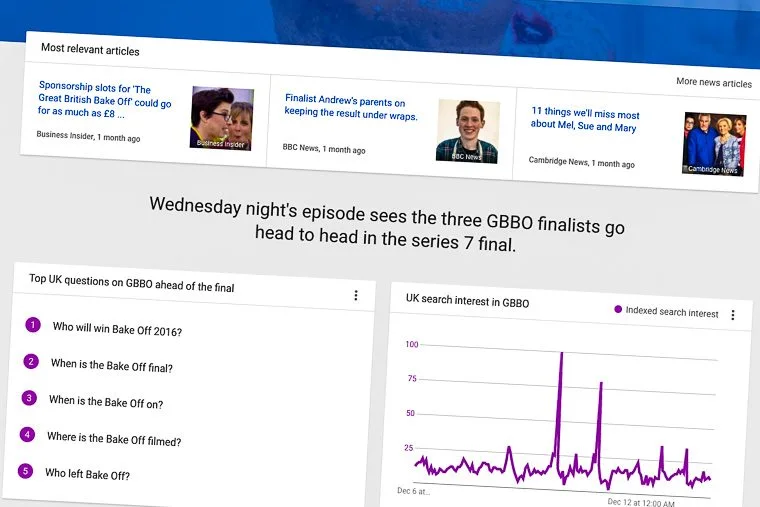
Google Trends demonstrates how the popularity of any given search term has changed over time
You might have spotted Google Trends on billboards or a colleague’s screensaver. The popular trending topic visual, highlighting the most popular search terms in Google, has been a source of interest for many people, including digital marketers. The search analysis tool is now over a decade old, marking significant longevity and, through its data, the huge change in how we search and for which topics.
Using a graphical timeline, Google Trends demonstrates how the popularity of any given search term has changed over time, and the geographical location where the most searches have been made.
Trends allows the user to compare search terms against each other, and displays the data in an easy-to-understand graph, with the option to highlight when search terms had been featured in the news, where applicable.
For example, here is the number of Google searches made for “Batman” (in red) in contrast to the number of times users searched for “Superman” (in blue):
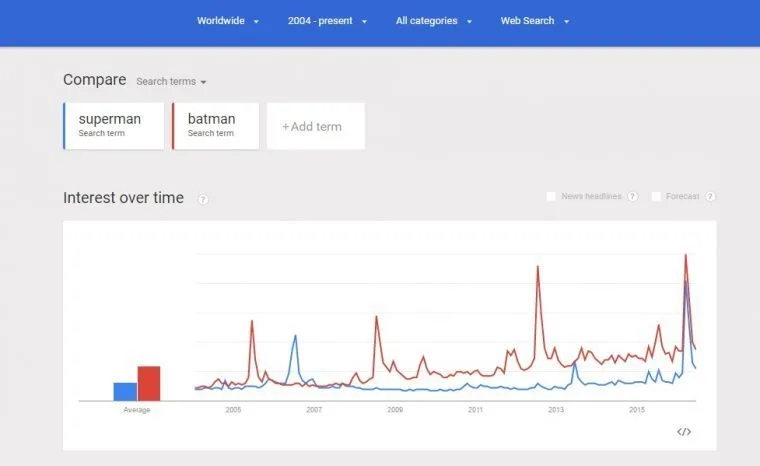
The peaks in both lines match up with any point in time when a new movie by either the Dark Knight or the Man of Steel was released. At the very least, their relative popularity in search seems to tally up with their box office performance – not even Ben Affleck’s best efforts could dent the Caped Crusader’s Google dominance over his Kryptonian counterpart.
Google Trends has grown and developed over the decade it’s been around, tapping into the latest expectations of its users. Eye-catching live updates of Google Trends information was added as a feature of the site in 2014, and can even be downloaded as a screensaver. Last year also saw the famous Silicon Roundabout, near Go Up’s Old Street office, begin hosting a billboard showcasing London-based data from Trends.
While these features are interesting, creating a new way to browse and make sense of the web for your average searcher, how is this useful to search marketers?
Google collects a phenomenal amount of user and traffic data. As a result, it has a good understanding of different searchers’ intents.
Google Trends offers an extra resource for keyword research, as well as allowing SEOs to create new content based on the relative popularity of similar subjects and keywords. This is particularly useful when it comes to identifying news stories on which to base new blog posts. It can also be used to gauge how relevant certain keywords will be to specific geographic locations, making it particularly useful for local SEO.
Google collects a phenomenal amount of user and traffic data. As a result, it has a good understanding of different searchers’ intents. For example, when you search for Jon Snow, the results offer an assortment of links to pages about both the Game of Thrones character and the Channel 4 newsreader.
Here is the graph for Jon Snow of Channel 4:
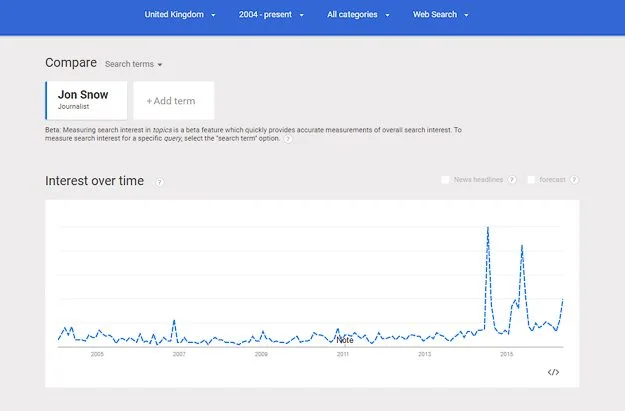
And here are the results for Jon Snow of Winterfell:
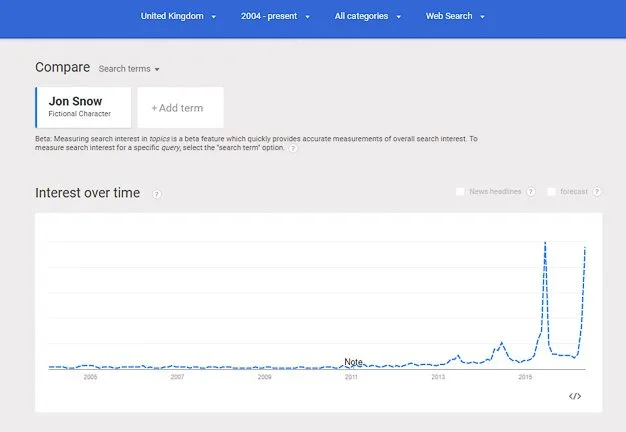
The highest point on a Google Trends graph is not determined by any numerical data, but the point at which most people were searching for it.
On the surface, those two graphs look pretty similar; even once Game of Thrones first aired in 2011, it would seem that more people were interested in finding out more about Channel 4’s quirky-tied broadcast hero. However, pitting them against each other tells a much different story, and shows the site’s most interesting feature:
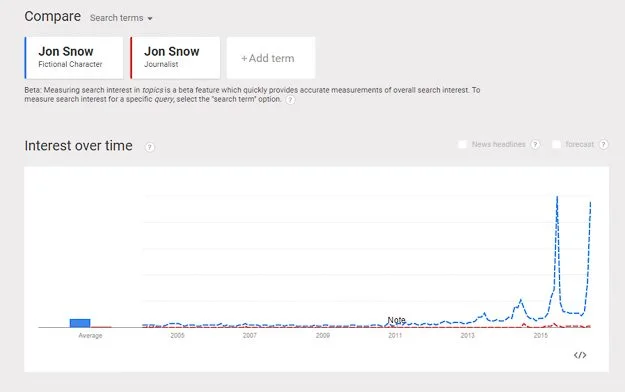
Strangely, the highest point on a Google Trends graph is not determined by any numerical data; rather, a search term’s peak only represents the point at which most people were searching for it over the time period selected by the user. In the case of Jon Snow from Game Of Thrones, we can glean from the dates at the bottom (and inherent nerdiness on the part of the writer) these peaks coincide with the end of season 5 – which ended on something of a cliffhanger for the young King Crow – and the start of season 6 – when viewers presumably hoped that cliffhanger would be resolved.
Content writers can’t use Trends as a way to get any statistics on search volume. That information is best taken from bespoke tools such as SEO Monitor, which give users a better idea of how to tailor keywords based on search volume.
Ultimately, it would seem that the best way to use Google Trends is to combine the information it gives you about the relative popularity of search terms with the objective facts and figures you can get from Keyword Planner. The graphs are shiny, exciting and user-friendly, but they’re nothing without the data to back it up.